Your Guide to Visiting Yosemite in Winter — Skiing, Snowshoeing, and the Epic 'Firefall' Included
Small crowds, big fun — here’s why a Yosemite winter visit should be on your travel list, and what to know before you go.
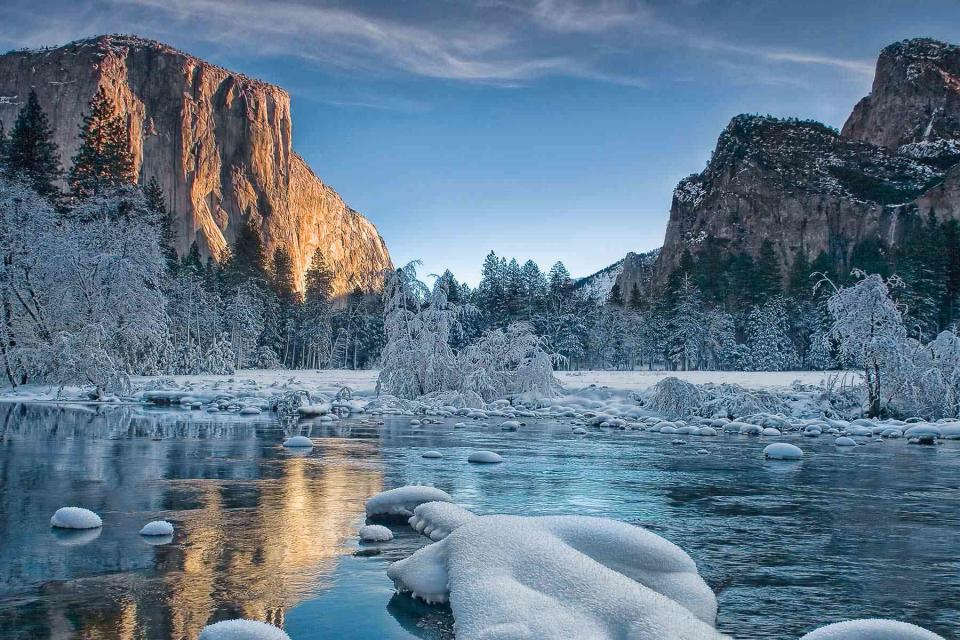
jp2pix/Getty Images
Warm weather may lure the majority of Yosemite National Park travelers, but there’s a reward for those who visit this outdoor adventure destination in the winter: low crowds.
“Winter here is quieter; it’s a really magical time, especially when there’s snow on top of Half Dome or the falls,” Yosemite public affairs officer Scott Gediman told Travel + Leisure. Gediman has worked as a ranger at Yosemite for more than 25 years. “If you have a good vehicle, tire chains, and you’re prepared [for the weather], it’s really special — plus, a lot of people don’t even think about coming this time of year.”
While Yosemite does have a few seasonal closures, it stays open year-round and offers cold-weather adventures like skiing, snowshoeing, and ice skating. Here's why a Yosemite winter should be on your travel wish list, and what to know before you go, from the best hikes and views to important safety precautions.
Most trails remain open.
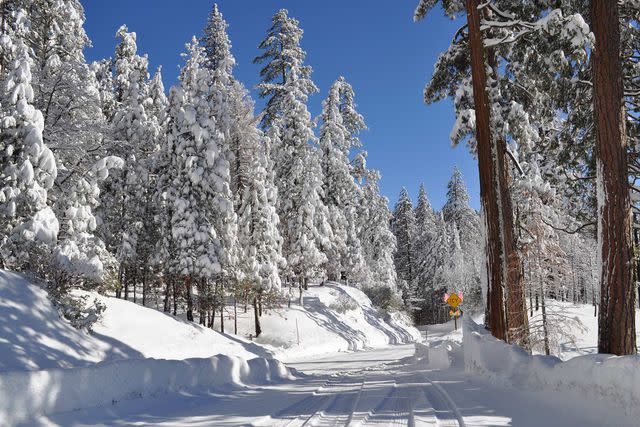
Emmy Denton/EyeEm/Getty Images
Yosemite backpacking may get trickier in the winter; it often requires skis or snowshoes, and serious winter route-finding skills. “With snow in the backcountry, we have more search and rescues because people lose the trail,” said Gediman. With that in mind, it’s important to know and respect your limits — for your safety and of others.
The good news? The majority of milder Yosemite day hikes do remain open and doable throughout the off-season. Some of the most scenic winter hikes in Yosemite include the one-mile, wheelchair-accessible Lower Yosemite Fall path, the two-mile round-trip route to Mirror Lake, and, for a longer challenge, the 11.5-mile Yosemite Valley Loop.
Road tripping? Use snow chains.
During the winter, you’ll need more than a four-wheel-drive car to access Yosemite. Tire chains are required by federal regulation in the winter, no matter the vehicle type. This includes snowy or icy road conditions, according to the National Park Service website. (Rental cars are not exempt.) Visitors should expect enforcement of the tire-chain rule from November through March.
Related: The Best Time to Visit Yosemite National Park
Pack layers.
The weather is anything but consistent during the winter in Yosemite. “Be prepared for everything,” said Gediman. “Have outer layers that repel rain or snow, but know it could also be a balmy 50 degrees.” In addition to packing layers, it’s important to bring gloves, water, a flashlight, a portable phone charger, and other supplies in case you get turned around and stay out longer than anticipated.
Try snowshoeing or skiing.
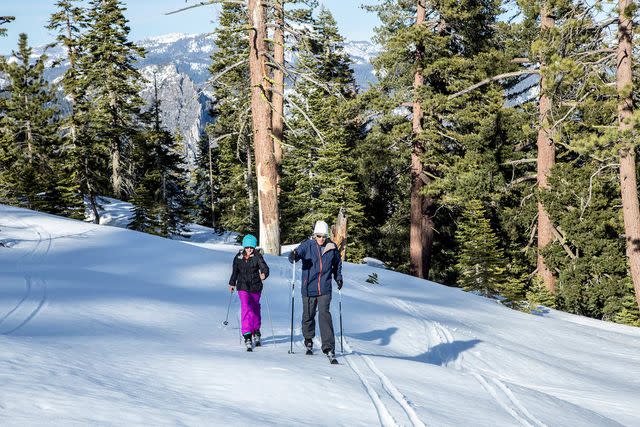
Stephanie Hager/Getty Images
Countless visitors see Yosemite via hike, but winter expands the outdoor possibilities with snowshoeing and skiing options in the park. Badger Pass Ski Area is the main winter adventure hub, with downhill and cross-country skiing, snowboarding, and tubing (depending on snow). Gediman said rangers run short snow sports excursions, like snowshoeing, throughout the winter.
Go ice skating at Curry Village.
Ice skating at Yosemite’s Curry Village is an age-old park tradition. The family-friendly attraction, complete with Half Dome views and cozy fire pits, is usually open from mid-November to mid-March, weather permitting. Tickets can be purchased online or at the Curry Village Tour & Activity Desk (sales at the kiosk open 15 minutes before each skating session), according to Travel Yosemite.
Add Horsetail Fall’s “firefall” to your calendar.
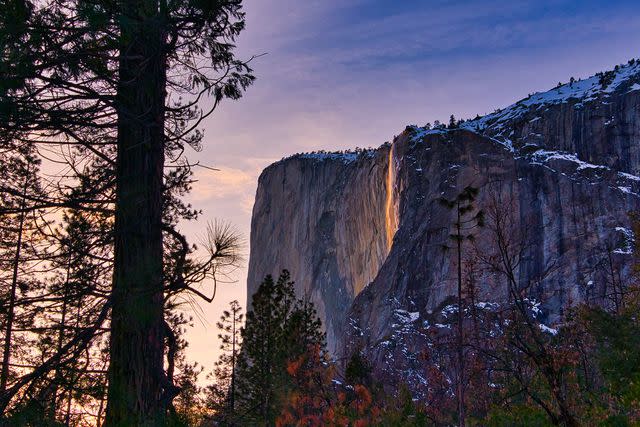
khanartist/Getty Images
One of the most popular winter events in Yosemite? "Firefall." This natural phenomenon occurs when the sun dramatically illuminates Horsetail Fall (on the east side of El Capitan), creating the illusion of a stream of rushing fire. According to YosemiteFirefall.com, the park has established rules to control "firefall" crowds, including a restricted viewing zone from Yosemite Valley Lodge to the El Capitan Crossover. If conditions are right (think: a clear western sky at sunset and water rushing down the waterfall), you can snag this view in late February, according to the National Park Service.
Watch for wildlife.
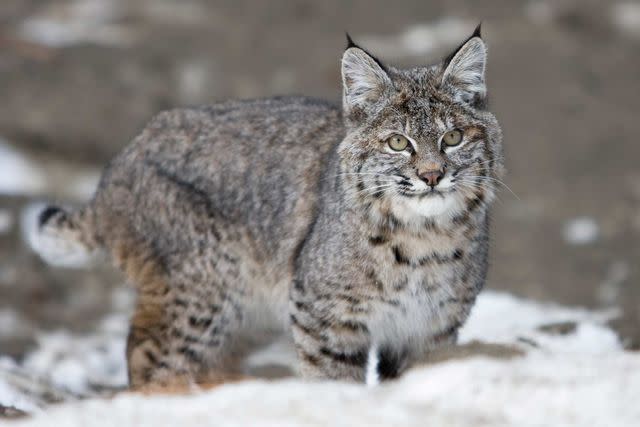
abe4633/Getty Images
Yosemite is home to plenty of animal species, including showstoppers like the black bear, Sierra Nevada red fox, mountain lion, and deer. You can see many of these creatures year-round, but according to Gediman, winter is a particularly ideal time to spot the elusive bobcat.
Monitor winter closures.
The park and its visitor centers in Yosemite Valley and Wawona stay open all year, but there are a few seasonal closures to keep in mind. Tioga Road typically closes from November through late May or early June. During its seasonal shutdown, vehicles cannot pass between Crane Flat and Tioga Pass, according to the National Park Service. The road up to Glacier Point is also closed to vehicles during this time. Keep an eye on the park’s alerts page to stay in the loop.
Related: How I Fell in Love With Yosemite National Park During a Surprise Snowstorm
Dodge the cold at a park museum.
Bookmark museums in and around Yosemite for a quick respite from the cold. Yosemite Museum, open year-round, showcases the culture of the park’s Indigenous inhabitants, including the Miwok and Paiute people. Photographers and nature lovers will also enjoy The Ansel Adams Gallery, an exhibition showcasing the beloved landscape photographer’s best work. It’s open year-round but closed on Thanksgiving Day and Christmas Day.
For more Travel & Leisure news, make sure to sign up for our newsletter!
Read the original article on Travel & Leisure.

